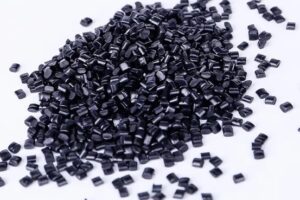A shielded control cable is generally used as the connection line of electrical instruments.
It is suitable for the connection line of electrical instruments with an AC-rated voltage of 450/750V and below and the transmission line of the automatic control system.
It has excellent properties such as oil resistance, water resistance, wear resistance, acid and alkali resistance, resistance to various corrosive gases, aging resistance, and non-combustibility.
Informatie
What Is The Source Of Electricity?
For contemporary people in most parts of the world, electricity is a necessity. It is an essential commodity that contributes to our comfort. Our jobs, gadgets, and most daily activities are directly dependent on our ability to access electricity.
Applications and Prospects of High Voltage DC Transmission Cable
From a worldwide perspective, high-voltage DC transmission cable is applied to the following areas such as long-distance high-capacity overhead transmission, power grid interconnection, and long-distance submarine cable transmission with obvious advantages.
6 Kenmerken van gevlochten kabel
Voor de stabiliteit zijn gevlochten kabels nodig.
Gekruiste draden zorgen ervoor dat de vlecht kan buigen en strekken zonder te buigen, vouwen of knikken.
Er zijn uitstekende elektrische geleiders, gevlochten kabels en een elektrostatische afscherming om de signaalintegriteit te garanderen.
Koper, vertind koper, en aluminium zijn voorbeelden van deze geleiders.
What Factors Affect The Output Power Of Solar Photovoltaic Modules
Solar modules are the core part of solar power systems.
Its function is to convert solar energy into electrical energy and send it to the battery for storage to facilitate the work of the load.
As an important part of photovoltaic modules, the output power of solar cables is very important.
Three-core Cables, A Better Choice to Ensure Safety and the Success of Project
Three-core cable helps connect devices and machines to the mains.
The size of the 3-core cables you choose to use and the way you design your circuit can also affect your project.
Because of differences in applications and variations in project specifications.
Aanvullend, high-voltage applications often require high-quality cables, known as steel wire armor (SWA), and their applicable standards and specifications.
Daarom, you must be familiar with the 3-core armored cable colors, and what the conductors of each color are for.
In this post, we will discuss all of these issues in more detail.
Single Cores or Multi-core Cables, How to Choose
There are two types of cables, single core cables and multi-core cables.
Because cabling is the most popular (and in most cases the only) way to power a site.
So, they are everywhere. You can find them in homes, factories, public buildings, roads and shopping malls.
A single core underground cable may not be visible because it is buried in a trench, while a multi-core cable application may be visible to all, running on a wall or ceiling.
This raises the question: what is a single core cable or a multi-core cable?
Why do you choose to use multi-core cables instead of single core cables?
Recognize Overhead Lines and Electrical Towers
Overhead lines are supported by sections of transmission towers.
Electricity pylons are used for the higher tension lines.
And wooden or concrete poles are typically used for lower tension lines.
This is because higher tension lines (línea de tension más alta) must be installed at a great height, as they require a greater safety clearance.
Only electrical pylons can afford to carry lines of tens of tons.
Can Plastics Be Conductors? What Are Plastic Conductors?
Plastics are often considered to have very poor electrical conductivity, which is why they are used to make insulating sheaths for cables. Echter, scientists have discovered that plastic conductors can be made by mixing plastics with a high concentration of filamentary carbon black and a coking compound. Plastic conductors are … Lees meer
ZMS Cables’ Top Solar Wire and Cable
The solar market is one of the fast-growing markets in the world and is expected to grow by 20% in the next few years. Daarom, it is only natural that there are many cable products for solar panels on the market. This quick guide will help you understand the differences between the main solar cable types offered by ZMS Cables.
Photovoltaic cables come with both aluminum and solar conductors. Both are popular, with aluminum being much cheaper than copper. Copper photovoltaic cables have excellent electrical conductivity. The differences between the two are examined in more detail below.












